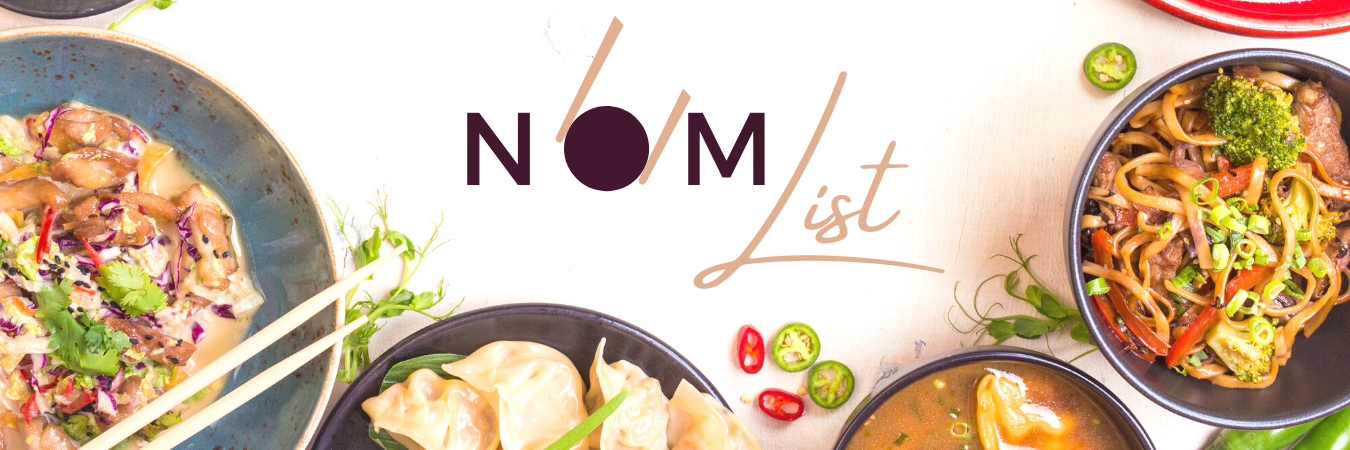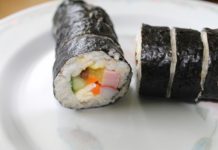
Sticky rice is a staple in most Asian countries. It clumps together into a ball – like the rice used to make sushi – so you can dip it and eat it on the go. In Laos alone, Vietnamese residents eat over 340 pounds of sticky rice each year per person. Compare that to Americans who eat about 20 pounds per year – that’s a whole lot of rice!
This short fat rice grain has been a mainstay of the Asian diet going back to 2,000 B.C. at least. Rice farmers in Asia continue in the grueling tradition of harvesting sticky rice grains all day and carrying sacks and sacks of it down steep hillsides, some to sell to market, and others to feed their families.
Still, no matter where you live, as someone of Asian descent, sticky rice is a part of us and having a way to make the best sticky rice is crucial. While using a really good rice steamer is important, the most important ingredient in making sticky rice is not the type of steamer; it’s actually the type of rice you use.
White rice won’t do. You can’t use jasmine rice, or brown rice. The only rice that makes the best sticky rice is glutinous rice that you can find in most Asian food stores. Look for the words “sweet rice" or "glutinous rice" on the label.
For this list of the 10 best rice steamers for sticky rice, we found the top rice steamers on the market. We also included some traditional bamboo sticky rice steamers in case you want to go all the way old school. Ready to have the best sticky rice all day every day? Give any one of these fabulous rice steamers a go!
10 Best Rice Steamers for Sticky Rice
Before we get to the list, you should know that a rice cooker and a rice steamer are two different things. Rice cookers make rice faster but rice steamers are best for making sticky rice. Making sticky rice the right way requires some prep work.
For the best results, you should soak glutinous rice before you cook it – for several hours or even 24 hours if you want. The goal is to allow the rice to completely absorb the water.
If you’re cooking two cups of rice for example, you’ll want to put the rice in a big bowl first and then fill the bowl with water so that the rice is submerged in three inches of water. Most of the water will be absorbed overnight. Before you begin to cook, drain what water is left and you are ready to go!
Finally, our last two picks on this list of the best rice steamers for sticky rice are two traditional sticky rice bamboo steamers. Before you buy these though, there is a particular way to prepare rice for this type of steaming.
With a bamboo steamer, you must first place it in a wok or pot and submerge the steamer in about a quarter of an inch of water. Cover the steamer inside the wok or pot and let the water boil for up to 45 minutes. If the water evaporates, add a little more until the 45 minutes are up. Now you are ready to make some sticky rice.
The Traditional Sticky Rice Cooking Basket from Panwa is an authentic Thai-style rice steamer. It is handcrafted and comes with cheesecloth. Made of traditional bamboo, you’ll get the aroma that you crave when you use this steamer and the rice won’t stick to the basket.
The Bamboo Rice Steamer Basket from Heavens Tvcz comes with a piece of cloth to keep your rice separate from the water below. One of the best features of this bamboo rice steamer is that it can be used with an electric steam cooker. It is five inches tall so make sure that you are using a steamer tall enough for the basket to fit inside.
Completely eco-friendly, this rice steamer is exactly what you need to make authentic Thai-style sticky rice at home. It is easy to clean and can be air dried in no time. All you need is a cooker or rice steamer that can hold a liter and you have the best of both worlds.
First on our list is the Programmable All-in-1 Rice Steamer from Comfee. Do you have a large family? Are you big on entertaining and hosting big dinner parties? If so, this is the perfect rice steamer for you! This is not just a rice steamer; it is a rice cooker, a stew pot, a yogurt maker and more.
Among its many fantastic features, this steamer is big – big, big! It can steam up to 10 cups of uncooked rice at one time. Its steamer is designed to hold steam within inside so that you can keep your rice warm for hours. There are 11 different settings on this puppy. You can even set the timer for up to 24 hours while you soak your uncooked rice overnight.
Whether you are feeding a large family every night or need a rice steamer that can feed a 20 person dinner party, this is the only rice steamer you will need to make perfect sticky rice.
Maybe you don’t entertain a lot, but you eat a lot of sticky rice. We’ve got the perfect rice steamer for you! The 5 Cup Panasonic Rice Cooker is designed to work as both a rice cooker and a rice steamer. It makes up to five cups of uncooked rice at once and has 16 pre-programmed cook settings.
This steamer comes with its own gourmet steaming basic, measuring cup, and rice scoop. There is also a 12 hour warming setting so that you can make 5 cups of sticky rice and eat on it all day long. The lid detaches so that you can clean it very easily.
Designed using a six layer pan on the inside, your sticky rice is evenly cooked every time. Plus, you can keep an eye on your rice as it steams through the LED display on the lid. From brown rice to quinoa, you can cook any type of rice in this top choice rice steamer and cooker!
To be clear, the 7-in-1 Electric Pressure Cooker from Instant Pot Duo is not just a rice steamer. It has all kinds of functions. It is basically seven different appliances in one! This thing can cook ribs, make yogurt, be used to sauté vegetables, and yes, steam rice to make excellent sticky rice.
Not every pressure cooker is versatile enough to gently steam rice to perfect stickiness, but this cooker is special. It can cook food slow or fast, using pressure or just the steamer. It is made of stainless steel so it is very durable and has a six quart capacity to feed a six person household.
With one touch, you can choose from 13 different pre-programmed settings and it comes with an app that includes nearly 2,000 different recipes! Whether you want to cook up some chicken and beans, sauté rice and veggies, or make a big pot of sticky rice, this gadget is made for you.
If you are looking for a rice steamer that can hold a day’s worth of sticky rice, look no further than the Digital Programmable Rice Cooker from Hamilton Beach. It can cook up to four cups of uncooked rice at a time and is made of easy to clean stainless steel.
This one-pot dinner maker goes beyond just steaming rice. You can steam vegetables in it, make cereal, cook seafood dishes, and of course, make perfectly steamed sticky rice. There are several different pre-programmed settings to choose from based on what you want to cook or steam.
For your sticky rice, you can make between two and eight cups of steamed sticky rice inside of the steam basket; perfect for filling your daily yen for delicious sticky rice. Another feature that we love about this rice steamer is the steam basket which can be used to rinse and soak your rice before steaming!
You’re going to love this rice steamer we found for you! The Digital Cool-Touch Rice Grain Cooker from Aroma Housewares is not just a great rice steamer; it is an all-in-one meal cooker. The toxin-free non-stick granite interior makes it easy to cook meats, soups and veggies on top, while your rice steams below.
This digital rice steamer holds up to four cups of uncooked rice and includes a 15 hour timer delay. You can begin soaking your rice when you get up in the morning and by the time you get home from work or school, you just hit the steamer and voila – perfect sticky rice is served in half the time of a traditional steamer!
Anybody can use this easy to use rice steamer. You can even bake a cake in it! Plus, once everything is finished, the steamer automatically goes into warming mode so that everything stays warm until you are ready to eat.
College students moving into the dorms will find the Mini Rice Cooker/Steamer from Dash invaluable! If you are looking for the perfect gift for your college-bound recent grad, look no further. It holds just two cups of rice – perfect for one person meals, and is small enough to fit in a small dorm without taking up too much space.
Preparing rice is a cinch with this thing. Just put your rice and water in, set the timer and off you go. Rice steams in just 20 minutes and the removable non-stick pot is super easy to clean. You can cook more than rice in it too! This steamer makes great oatmeal, pasta, soups, and more.
It even comes with a recipe guide to get the most out of your mini rice steamer. The warmer function ensures that you can eat and go all throughout the day with this excellent choice for steaming up some sticky rice.
Not only is the ARC Pot Style Rice Cooker & Steamer from Aroma Housewares cute, we like the fire engine red color of it! This simple steamer makes cooking perfect sticky rice simple and easy. There is a one-touch programmable cooking function that allows you to add the water and rice and cook with one touch.
There are multiple levels inside the pot so that you can cook meats and veggies on one layer while steaming the rice on another. Once everything is finished cooking, the warmer kicks in so that you don’t accidentally overcook your rice.
Dishwasher safe, once you are finished cooking, just take out the interior pot and pop it in the dishwasher. Cooking is easy, clean up is easy, and sticky rice to go is a breeze making this simple rice steamer a terrific buy!
Although the Rice Steamer & Multi-Cooker from Panasonic is simple, it is also very useful. It can coop up to three cups of uncooked rice of any kind. Unlike some of the other rice steamers on this list though, you can only cook one dish at a time.
That said you can still make other things besides rice in this steamer just like our other picks. You can make soup, oatmeal, steam vegetables, and more with just one button. It doesn’t have an auto warming function, but it does shut off when your food is done so that you don’t burn or overcook anything.
From the top of the steamer, you can keep an eye on the progress of your food cooking or steaming inside. The interior is made of aluminum so it is very easy to clean and long lasting after years of use.
Drinking Sake
So now that you’ve ordered your Sake set, here’s how to drink it and which foods it is best paired with.
If you are not drinking alone, it’s customary for someone else to fill and refill your “ochoko” and vice versa. When the server pours the drink, hold your cup out slightly. Do the same if you are requesting a refill.
“Kampei” (or “cheers” in Japanese) is the typical toast when drinking Sake. Then, hold the cup close to your face to take in its aroma, take a small sip, and savor the taste in your mouth before swallowing.
If you want to serve warm or hot Sake, you can do so by placing the entire flask (“Tokkuri”) in a pot of boiling water.
You may also choose to enjoy drinking Sake while enjoying some of your favorite dishes. While the beverage combines particularly well with spicy dishes, you can combine it with practically anything. Saki experts claim that Junmai pairs well with seafood and sushi while Junmai Daiginjo goes well with meats.
The Origins of Sake
Sake originated in Japan and has been around for over 2,000 years. It was initially deemed “the drink of the gods” and continues to be one of Japan’s most popular drinks.
Brewing Sake began around 300 B.C. when wet rice cultivation was first introduced. Though the origins of the alcoholic beverage can be traced back to the Chinese, it was the Japanese who first started mass producing this tasty yet simple concoction.
As mentioned before, making Sake involves polishing or milling rice kernels. The milled kernels are then cooked in clean water and made into a sort of pap.
The earliest Sake brewing was pretty nasty. The entire community would chew rice and nuts and spit the mixture into a communal tub. This Sake was called “kuchikami no sake,” which means “chewing for mouth sake.” The enzymes in the saliva facilitated the fermentation process. While this method for making Sake was actually part of a Shinto religious ceremony, this process of communal tub-spitting was discontinued when it was found that adding Koji (a mold enzyme) and yeast could cause the rice to ferment as well.
At its origins, Sake was produced and consumed on an individual and familial basis. However, further on down the line, Sake rice became a large-scale agricultural product. Nevertheless, even with its widespread production, Sake was mainly consumed by the upper classes. The beverage also continued being used in Shinto religious ceremonies. It would be offered as a sacrifice to the gods and was also used to purify the temple. Additionally, on the day of their marriage, brides and grooms would consume Sake in a process known as Sansankudo.
Fast-forward several centuries into the twentieth century. At this time, a press replaced the traditional canvas bags that were used to squeeze out the liquid from the rice mash, yeast, and koji mixture. Shortages of rice during World War II also changed the way Sake was made: glucose and pure alcohol were introduced to the rice mash in order to increase the production yield and brewing time. Although this practice was born of necessity, it continues to be used today.
While the brewing process and availability of Sake has changed through the years, its importance in Japanese culture has not. From its origins, Sake has been a drink of family, friendship, and reverence, consumed to mark important occasions. Because the beverage is meant to be enjoyed with those one holds dear, tradition holds that one must never pour their own Sake. This culturally and historically significant drink has been enjoyed in Japan for millennia and is now being enjoyed internationally.
Selecting the Right Bottle of Sake
Undiluted Sake contains an ABV of 14 to 20 percent. When sold by most manufacturers, the drink is diluted by combining it with water.
Sake tastes unlike any other beverage on the market, and it may be an acquired taste for some. Nevertheless, because many factors affect the flavor, quality, and aroma of the drink, it is important to try different kinds of Sake before deciding on your preference (or before writing it off altogether).
Fresh Sake usually has a better taste than koshu (aged) Sake, which typically tastes rougher and stronger.
Another way to know the flavor of the Sake is by referring to the Nihonshun-do. Nihonshun-do describes the sugar level – or sweetness – of the beverage. Also known as the Sake Meter Value (or SMV), a +5 would indicate a relatively dry taste while a -2 would be rather sweet.
Regardless of your palate and preference, there is likely a Sake that you will fancy. Even if you don’t prefer to drink your Sake straight, you can always mix it to create your very own cocktail. You can also infuse your Sake with flavors and spices to create different notes.
How Sake is Categorized
Unlike wines, which are categorized by the variety of grapes used, Sake is classified by how much the various rice strains are milled. To put it more plainly, if you eat white rice, about 10 percent of the rice grain has been milled. All rice is brown rice, but milling gives it its white appearance.
Sake rice has been milled at least twice as much as traditional white rice. The reason why rice used for Sake must be milled is that each grain of rice contains starch. Starch converts into sugar, and sugar converts into alcohol. However, unless it's milled, the starch is surrounded by layers of fat, minerals, proteins, lipids, and vitamins. While these things are good for you, they’re not good for making Sake. So, the more impurities you remove, the more refined your Sake will be.
Class X Sake: Made using rice, mold, and water. All Sakes in this class are “Junmai,” meaning that brewer’s alcohol has NOT been added.
Junmai – Rice has been milled 30% and 70% of the original grain remains.
Junmai Ginjo – 40% of rice has been polished, and 60% of each grain remains.
Junmai Dai Ginjo – 50% has milled and 50% of grain remains
Class Y Sake: Sakes made using rice, mold, water, and brewer’s alcohol
Honjozo – The rice has been polished 30% and 70% of each grain remains.
Ginjo – 40% polished and 60% remaining
Dai Ginjo – The rice has been milled 50% with 50% of each grain remaining.
Other Types of Sake
Nama – Sake is usually pasteurized twice. Nama Sake is pasteurized once.
Nigori – Sake that hasn’t been filtered resulting in a cloudy appearance.
Genshu – Sake that is undiluted by water to lower alcohol content.
Taru – Sake that is fermented then placed in cedar casks to give it a woodsy taste.
Kinpaku – Sake with gold flakes, used mainly in celebrations and lavish occasions.
Koshu – Sake that has been purposefully aged or matured.
Kijoshu – Sake that is sweeter and considered an after-dinner beverage.
Serving Sake
Traditionally, SakiSake is served from porcelain flasks known as tokkuri. The drink is poured into small ceramic cups called ochoko or sakazuki and sipped. You can also chill Sake and drink it from a wine glass.
Sake can be served at room temperature, warm, hot, or chilled. This usually depends on the quality of alcohol being served, the season, and, of course, the drinker’s preference. However, high-quality Sake should always be served chilled or at room temperature because adding heat can cause the beverage to lose its flavor and aroma.
To preserve its freshness, store bottles of Sake in cool, dry, and dark areas. It’s also best to finish an opened bottle, so bottom’s up!
And now that you’ve been schooled on how Sake is made, the best way to find your personal preference, and how to serve Sake, we present you with the best Japanese Sake sets.
NomList.com is a participant in the Amazon Services LLC Associates Program, an affiliate advertising program designed to provide a means for sites to earn advertising fees by advertising and linking to Amazon.com. CERTAIN CONTENT THAT APPEARS ON THIS SITE COMES FROM AMAZON SERVICES LLC. THIS CONTENT IS PROVIDED 'AS IS' AND IS SUBJECT TO CHANGE OR REMOVAL AT ANY TIME. Product prices and availability are accurate as of the date/time indicated and are subject to change. Any price and availability information displayed on Amazon.com at the time of purchase will apply to the purchase of this product. All prices on this site may change and those considered valid are displayed on Amazon.com














